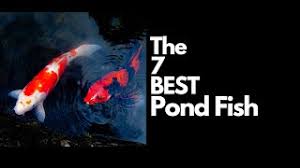The Importance of Fish Freedom
Fish freedom is a crucial element in maintaining the balance of aquatic ecosystems and the overall health of the environment. It refers to the natural ability of fish to move freely within their habitats without interference from human activities or environmental destruction. The freedom of fish not only ensures their survival but also contributes to the well-being of entire ecosystems that rely on healthy fish populations. In this article, we will explore why fish freedom is so important, how it impacts aquatic life, and what we can do to protect this freedom for future generations.
Fish Freedom: A Key to Ecosystem Health
Fish freedom plays a vital role in the functioning of ecosystems. Fish are an integral part of aquatic food webs, serving both as predators and prey. Their migration patterns, for example, are essential for maintaining biodiversity and the flow of nutrients across ecosystems. In freshwater systems, many fish species travel upstream to spawn, a process that is critical for the continuation of their populations. In marine environments, fish migration helps maintain the balance of species and the health of coral reefs and seagrass beds, which rely on fish for the recycling of nutrients.

When fish are free to move between different habitats, they can better adapt to environmental changes and continue fulfilling their ecological roles. However, when human activities such as damming rivers, overfishing, and pollution interfere with fish migration or populations, it can have devastating effects on both the fish and the ecosystems they inhabit.
Threats to Fish
One of the most significant threats to fish freedom is the disruption of natural habitats. Dams and other barriers, for example, block fish from reaching their breeding grounds, preventing them from completing their life cycles. This is especially problematic for migratory species like salmon and eel, which need to travel vast distances between freshwater and marine environments. The lack of access to these habitats can lead to population declines and even extinction for some species.
Overfishing also compromises fish freedom. When fish populations are reduced to unsustainable levels, the remaining fish are unable to fulfill their ecological roles. This leads to imbalances in the ecosystem, affecting not just the fish themselves, but also the organisms that depend on them for food and nutrients. Moreover, overfishing disrupts natural breeding patterns and reduces genetic diversity, further threatening the survival of species.
Pollution is another major threat to fish freedom. Contaminants like plastics, pesticides, and heavy metals can pollute water bodies, harming fish directly by causing diseases or reducing reproductive success. Polluted waters also degrade the quality of fish habitats, making it more difficult for fish to survive and thrive. Water temperature changes due to climate change and pollution further exacerbate these challenges, stressing fish populations and disrupting their migration patterns.
The Benefits of Protecting Fish
Protecting fish freedom has far-reaching benefits for both aquatic ecosystems and humans. Healthy fish populations are crucial for maintaining biodiversity. Fish are a primary food source for many other species, including birds, mammals, and humans. They also play an important role in regulating the populations of smaller organisms, maintaining a balanced food web.
In addition, fish freedom contributes to the health of aquatic plants, coral reefs, and seagrass beds, which rely on the activity of fish to thrive. For example, fish help to control algae growth by feeding on it, preventing algae blooms that can deplete oxygen levels in water and harm other aquatic life. Healthy fish populations also contribute to the nutrient cycling process, which supports the overall productivity of aquatic ecosystems.
What Can We Do to Ensure Fish Freedom?
Ensuring fish freedom requires collective action from governments, communities, and individuals. One of the most effective measures is habitat conservation and restoration. Efforts to remove dams or build fish passages can help restore migratory routes and give fish access to their natural habitats. In areas where fish populations are threatened, creating marine protected areas can provide safe havens for fish to reproduce and grow without the pressures of overfishing.
Sustainable fishing practices are also crucial to protecting fish freedom. This involves setting catch limits, reducing bycatch, and using fishing methods that minimize harm to aquatic ecosystems. Supporting policies that promote sustainable fishing and combat illegal fishing activities can help maintain fish populations and protect their freedom to thrive.
Finally, reducing pollution is essential for preserving fish habitats. Efforts to reduce plastic waste, improve water treatment, and regulate industrial discharges into rivers and oceans can help keep water bodies clean and safe for fish. Public education and advocacy are also important for raising awareness about the need to protect fish freedom and aquatic ecosystems.
Conclusion
Fish freedom is not just about allowing fish to swim where they please; it is about ensuring the health and sustainability of entire ecosystems. By protecting fish freedom, we are safeguarding the biodiversity and resilience of aquatic environments that provide food, clean water, and livelihood for millions of people around the world. It is our responsibility to protect these valuable resources by preserving fish habitats, promoting sustainable fishing, and reducing pollution. Only then can we ensure that future generations can enjoy the beauty and benefits of healthy, thriving aquatic ecosystems.



